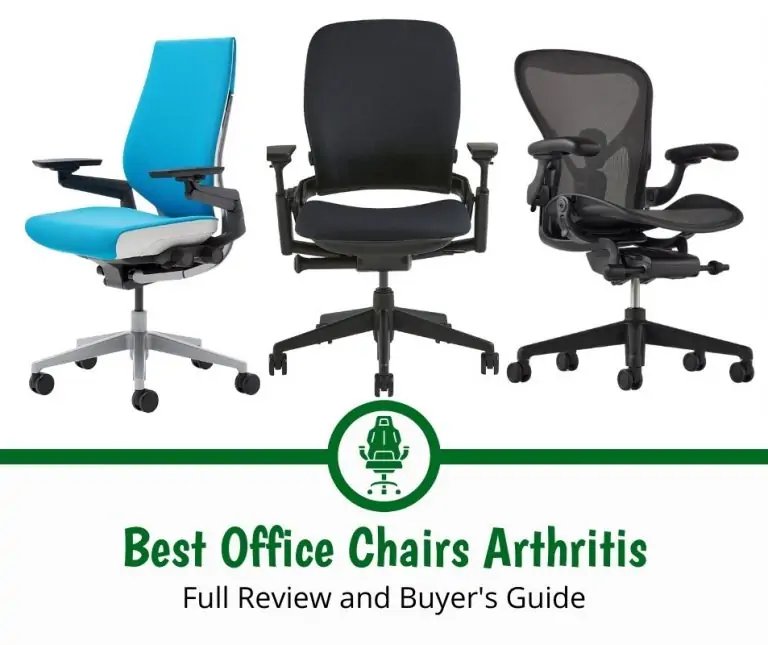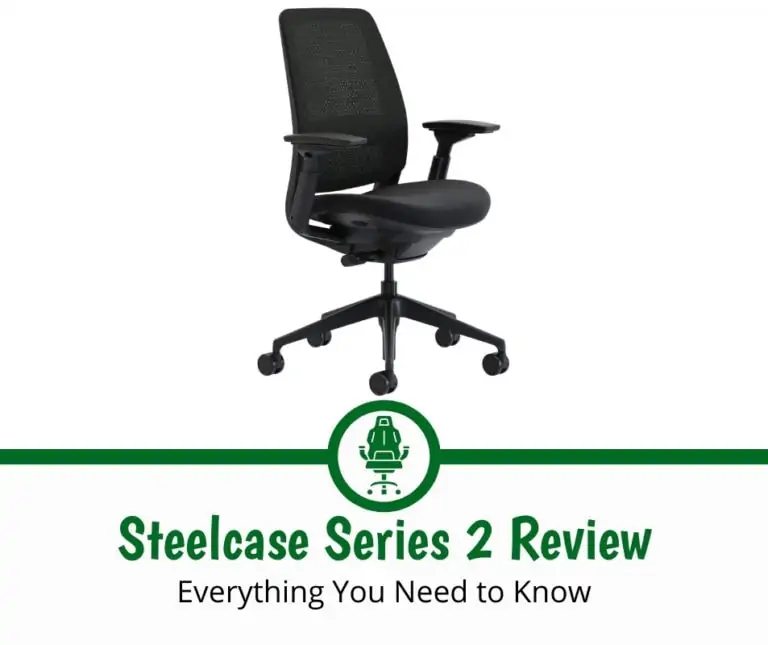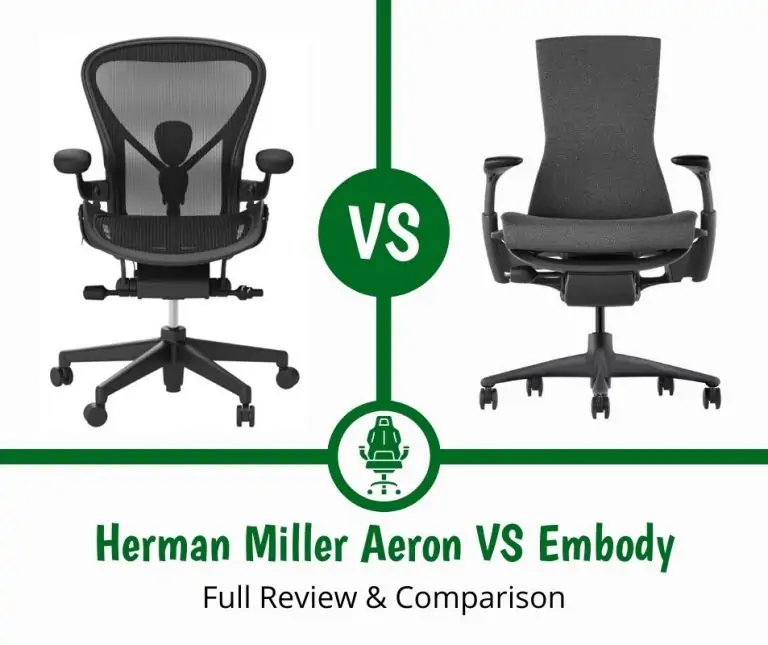How Long Do Office Chairs Last?: Everything You Need to Know

With prices steadily creeping up, it’s not unfair to consider buying an office chair an investment. As with any investment, you want to be sure it has longevity before you sink your hard-earned money in. How long will an office chair last you?
The average lifespan of an office chair is between five and 10 years, but many factors affect the lifespan. They include the price of the chair, build quality, materials, usage, chair environment, warranty length, and maintenance and care.
In today’s guide, I’ll talk further about the factors that dictate the lifespan of an office chair. By the time you’re done reading, you’ll be able to use this information to buy a higher-quality chair that will last you for quite a while!
What Is the Average Lifespan of an Office Chair?
You’ve found a great office chair that checks a lot of your boxes. It’s stylish, comfortable, has good adjustments, and it doesn’t break the bank.
How long will this new chair of yours last you?
Well, it’s hard to say exactly how long the chair will last, as there are a variety of factors at play that can reduce an office chair’s lifespan. I’ll talk about those in the next section, so be sure to check that out.
How long an office chair should last is anywhere from five to 10 years.
Could your chair have a lifespan even longer than a decade? Absolutely! If you’re especially meticulous about chair maintenance and you take good care of your chair, then it could get you through the long haul.
The Factors That Influence How Long an Office Chair Lasts
As promised, I’ll next delve into the factors that can extend the life of a chair or chip away at that expectancy.
Here’s the full list.
Chair Price
If you spent $150 for an office chair and you’re expecting it to last for two decades, you’re going to be sorely disappointed.
I would bet that the chair doesn’t even last one decade. If you get three years out of it, that would be lucky.
A heftier office chair price tag means that the build quality is better, and the materials are more durable, two points I’ll touch on more in just a moment.
Now, I’m not telling you to shell out $1,500 for a Herman Miller chair unless that’s in your budget.
That said, I would advise you to do this. If you can only spend $150 on a new office chair right now, it’s better to save up for a few months and spend twice or thrice that.
After all, in the long run, you’ll save money.
Let’s say a $170 office chair lasts you one year, and a $450 office chair lasts you five years.
Over five years, you will have spent $850 on replacement office chairs assuming you decided not to upgrade your office chair quality at any point.
That’s twice what you would spend in five years if you had just bought the $450 chair in the first place.
Build Quality and Materials
What’s the difference between a high-end office chair and a cheap one? Two very important factors, build quality and materials.
Let’s say your cheap $150 office chair has a plastic frame. That frame seems suitable once you get the chair out of the box and assemble it.
Even within the first few days of use, the plastic skeleton seems like it will work just fine.
A month in, the frame begins to crack in one area. Two months later, there’s another crack, then another and another.
A more expensive office chair with an aluminum or steel skeleton will not easily buckle. You’d have to do some serious damage to the chair (such as surpass the recommended weight limit) for that kind of frame to begin falling apart.
High-quality office chairs are better in other ways as well. They feature plusher seating materials, perhaps even several layers of material in the case of the Herman Miller Embody.
They’re supportive and feature more advanced ergonomic support. You might be able to adjust the backrest and maybe even improve your posture and stave off pain simply by sitting in the chair.
The arms, while not always 4D, should be at least 3D so that no matter how you like to sit in an office chair (after all, who said office chairs are only for work?), the armrests wouldn’t be in your way.
All these features and materials add up to an office chair that’s built to last.
Usage Rate
Another factor that absolutely impacts the lifespan of your office chair is how often you use it and how hard you are on it.
Most people who are shopping for office chairs are looking for a seat for their job so they can productively finish tasks.
As I touched on in the paragraphs above, others who might buy an office chair are those who stream video games and are looking for a chair with excellent ergonomic support.
These people plan to be in their office chairs all day for five or more days per week.
Office chairs aren’t meant to be stared at and admired, except for maybe the Herman Miller Aeron, since it is in the MoMA, after all.
For the most part though, an office chair is built for sitting and using.
Like your flat-screen smart TV or your used car, the more you use your office chair, the sooner its demise is. It’s unavoidable, but it has to be discussed.
Chair Environment
Here’s a factor that’s very much under your control. What kind of environment are you keeping your chair?
Is it a room temperature place or does the environment lack any temperature control? Is the office chair safeguarded from UV rays or is it sitting square out in the sunshine?
Is the chair indoors or does it spend some time exposed to the elements? How humid is the environment, and is there any kind of humidity control?
Even well-made office chairs can begin to fall apart when conditions are less than ambient.
Humidity can cause materials like leather to degrade if the levels are higher than 40 percent. Sometimes as much as 60 percent humidity is required before leather cracks, but it depends.
Fabric office chairs will not fare better. In warm, damp, dark conditions, mold and mildew will propagate.
You could always remove the mold residue from your chair with a specialized cleaner, but if the atmosphere doesn’t change, the mold and mildew will grow again.
UV rays can damage any office chair material, causing it to fade unappealingly and accelerating the degradation of materials.
No office chair is designed for outdoor use, especially not in inclement weather. Your chair could be permanently ruined even if it’s only one day old.
Warranty Length
Lower-cost office chairs typically include warranties good for a year or two. If you’re buying a costlier office chair though and it comes with a seven-year warranty or even a 12-year warranty, the warranty length is a pretty good indicator of how long your chair should last.
Maintenance and Care (Or Lack Thereof)
Finally, among the most important factors regarding the lifespan of an office chair is how well you care for the chair.
When you spill something, do you clean it immediately or let it fester? Do you vacuum the chair, lubricate squeaky parts (if you can get to them and doing so doesn’t void your warranty), and clean the casters?
The more love you put into your office chair, usually, the longer it will last you.
Signs It’s Time to Start Shopping for a New Office Chair
When is it time to bid your current office chair adieu and upgrade? These signs will let you know.
Using the Chair for Too Long Hurts
The office chair you own now was supposed to improve your posture, and for a long time, it did. It’s just that it no longer does anymore.
As a result, after a couple of hours, you’re left with a stiff neck and screaming lower back pain. By the time you leave the office at the end of the day, you’re very uncomfortable.
This affects your quality of life after work, as you can’t engage as actively.
The pain that your office chair is causing you now will not get better with time. You need a new chair.
Your Chair Feels Loose
You’ve tightened up every lug, screw, and lever you can get your hands on. You worry that if you continue tightening them that you could strip the screws.
Even still, despite all your efforts, sitting in your chair is a precarious balancing act. You feel like at any moment, you could tip right over.
This is another one of those situations that time is not going to fix. If anything, the issue will continue to get worse, so replace your office chair now before you end up dumped on the floor!
The Seat Is Flat
As I talked about earlier, when your office chair is cheap, then it’s only a matter of time (and usually not a long time either) before the foam in your office chair flattens and doesn’t ever bounce back.
Now you’re sitting directly on cardboard, a slab of wood, or even steel depending on the design and layout of your chair.
Unless you cut open the chair upholstery and manually replace the foam yourself, then that original layer of foam will never feel pillowy soft again. It’s time to begin browsing for new office chairs.
The Chair Looks Bad
Is it okay to dump your office chair just because it looks worn? If you didn’t spend that much money on the chair in the first place, then yes.
If other issues are affecting the chair’s usability as well, then you don’t have to justify replacing it!
Your Warranty Expired
Did your office chair warranty just expire? Now, if anything goes wrong with the chair–which is likelier with age–the responsibility to get the chair repaired is entirely on you.
At this point, shelling out more money on the chair really isn’t worth it. You should just take that money and funnel it into a new office chair instead.
Conclusion
How long an office chair lasts is in part up to you. If you’re willing to spend more money on a high-quality chair, then you’ll get more years out of it due to its exceptional build quality, luxury materials, and lengthy warranty.
No matter how much your office chair costs you, keep it clean, prevent UV and humidity exposure, and use it properly and it should last at least five years and sometimes double that!






